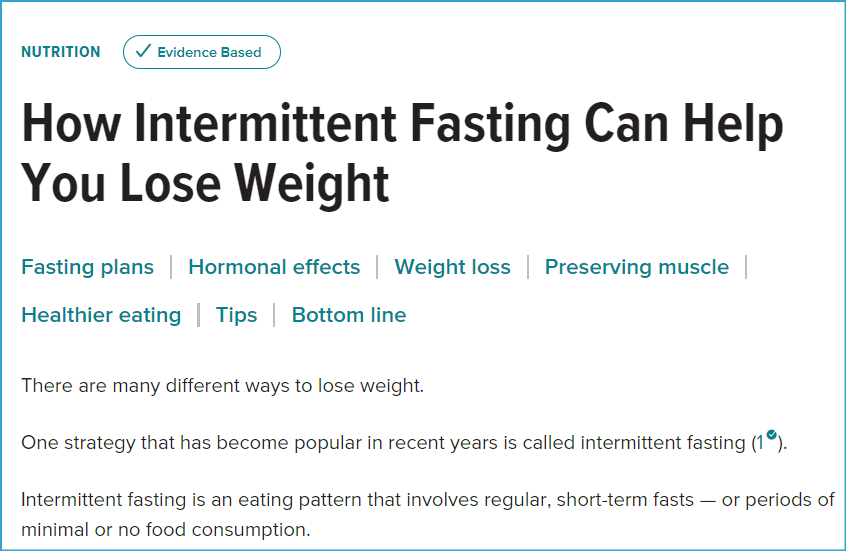Advertising is a powerful tool that can be used to reach out to a vast number of customers. But it can also be a waste of time and money if not done right. Ad campaigns are not one-size-fits-all.

Advertising is not just about selling products or services—it’s about connecting with customers on an emotional level. Companies need to understand their customers and make sure that their ad campaigns resonate with them. You can increase your chances of creating ads that resonate with potential customers by using different advertising angles.
You can use different advertising angles for different purposes. For example:
If you sell products, you could highlight the benefits of your product and how it helps solve customer problems.
If you sell a service, you can promote it by showing potential customers how your service helped other people, what kind of results they have achieved, and what makes your service unique
And if you’re in the non-profit sector, you could use ad angles to promote your cause’s values and beliefs by talking about how your work helps people in need.
Multiple advertising angles ensure you send the right message to the right audience at the right time. You stay relevant and when one angle doesn’t bring you results, you have many more fallbacks. You’ll run airtight campaigns where nothing slips through the cracks.
We’ve scoured the internet and put together this list of advertising angles to help you create ads that resonate with your audience and convince them to buy from you.
Let’s start by understanding what advertising angles are.
What the heck is an angle, mate?
Your advertising angle is how you reach out to potential customers with your offer, creating a way to draw them to your advertisement by appealing to their preferences, finding the best way to connect and influence them, and then swaying them to take action.
Without an effective angle in place, even your best marketing campaigns would stop working—you’d only be wasting your promotional efforts. And when you populate creatives such as landing pages and ads with disjointed messaging, they’ll fail to generate leads, let alone purchases.
Using an advertising angle ties your marketing techniques together and makes your campaigns more engaging. You’ll be able to come up with different strategies for building genuine and convincing sales messages that reach out to targets and lead them towards conversion.
You should always create your angle with prospects in mind so that it is effective. And you do so by:
- speaking the language of the targeted audience
- giving answers to important concerns
- providing a persuasive reason to take the action that you want them to
Advertisement angles let you provide a glimpse into the purpose of the promotion and connect it to potential customers. Doing it wrong could cost you sales. The best way to entice prospects to engage with your product or service is to present it from a clear, coherent, and unique angle.
How to create your own advertising angles
Finding your own angles begins with research and talking to your intended audience to figure out what issues they face and what holds them back from taking action. You will find that one angle that will crush all others faster if you make fewer assumptions and have more information on your audience.
Get clarity on your angles by asking yourself these three questions:
- What am I helping the audience with?
- What is the solution they need?
- If this was a blog post, what would the topic be?
A compelling angle must be conveyed both in the headline, as only a few people read past it, and in everything from the landing page copy to the images. It becomes a lot easier to pick the right image and write the perfect copy once you have found your angle because the angle acts as a “road map” through the entire message of your campaign.
The marketing angles that you choose should be intentionally built with the target persona in mind and should be designed to speak to the customers, respond to their questions, or offer a compelling reason for them to take the beneficial action you have provided to them. The reason why these angles work so well is that they tap into the feelings and emotions of users.
Good advertising generates motivation, appetite, and excitement in people so they will be motivated to take up your offer. This occurs without the target audiences even realizing they are being influenced.
To know whether you’ve come up with good angles, check your ads against these five criteria.
Here are 5 criteria for a good advertising angle:
- Highlight a problem facing your target market and then provide a solution
You should advertise products or services which offer solutions that are not readily available to your target market. That way your advertisement lingers in the minds of the target audience.
- Simplify the conditions for accessing your product or service
Once you have a target’s attention, you should eliminate all of the obstacles to conversion by describing and illustrating how convenient and easy it is for them to solve the problem—be transparent. Everyone loves simplicity. Your prospect would prefer it if they didn’t have to work any harder than they should—especially if you can assure them you have an easier solution to their problem that yields similar or better results. Make it as easy as possible for potential customers to access your offer.
- Demonstrate how your solution will benefit the prospect
Your marketing campaigns should ALWAYS provide a benefit. Your advertisement’s main selling point, for example, could be that your product saves time or money. People who want to save money or do something quickly would find this attractive.
- Show your prospects that there is little to no risk of taking you up on your offer
Providing free trials or samples to consumers can help you accomplish this, so your targets will not think they are taking a risk when they buy your goods or services. Make sure you describe the value of your products and what your customers will receive if they choose to buy from you. Nobody wants to waste money on the wrong things.
- Inspire a sense of urgency
Let your targets know that there is a limited supply of what you’re selling or that they could miss a time-sensitive deal if they don’t take action immediately.
Choosing the right marketing angle can make a huge difference when it comes to convincing customers to purchase your product.
You can start by using any of these simple, yet effective marketing approaches
Angle #1: “It’s easy!”
Everybody likes easy things—I mean, who would want to work any harder than they should if they can get an easier solution that will produce the same—or better—results.
Thankfully, the “easy” marketing angle is one of the easiest to incorporate (see what I did there? 😅). See how SproutSocial does it through the phrase, “Social Media Management Made Easy.”

Your angle doesnʼt need to be that obvious, however. Site builder, Strikingly, applies this angle without necessarily using words like “easy” or “simple.” Instead, headings like “Create a beautiful website for you & your business, in minutes” and “Zero code or design skills required” demonstrate how easy it is to use their service.

Take a look at this other example from OptinMonster. The headline of the article communicates ease by using the phrase “Make Money While You Sleep.” A chance to earn some passive income? Count me in!

Ideally, your offer should appear as an easy option to the audience even if it is not glaringly obvious. Just remember to communicate how easy it is to use your product or service. Here are a few examples to guide you:
- Affiliate Marketing Made Easy
- Create A Professional Business Card For Your Company In Minutes
- Learn How To Build A Website… Zero Code Or Design Skills Required
- 5 Quick Steps to Getting that Beach Body
Angle #2: “Everyone else is doing it.”
We are social creatures by nature. Even when we don’t realize it, we tend to follow the crowds.
It follows that if “everyone else is doing it”—buying your product, enrolling in your course, signing up for your newsletter—you can expect the next person to engage in this behaviour as well.
However, the key to this marketing approach is to prove it to your customers rather than merely telling them. You do this through social proof.
Are you familiar with the McDonald’s signs that say “Billions and Billions Served”? How about that for social proof?
HubSpot uses a similar strategy to encourage newsletter sign-ups. “Join 215,000 Fellow Marketers” may not be complex copy, but it works. It shows how popular the newsletter is. And speaks directly to Hubspot’s target audience, urging them to jump on board as so many people like them—”fellow marketers” —have done.

In the same way, Avast says: “Powered by a community over 400 million strong.”

WordPress takes the popularity angle by pointing out their worldwide community and the fact that 28% of website owners trust their software.

Angle #3: “It’s the ideal solution to your specific situation.”
Customers aren’t always aware of how a product or service can solve their problems. Highlighting this for them will greatly increase their interest in your offer. You can state the solution explicitly.
In the example below, Crazy Egg clearly lays out the problem and solution.
Problem: Your site visitors are leaving (too soon).
Solution: Use Crazy Egg’s heatmap to identify why.

Sometimes a customer knows their issue and the solution. All you have to do is to show that you’re what they are looking for.
Hootsuite, for example, provides an easy way to manage all your social media profiles in one place, which is one of the biggest problems in social media marketing. Their homepage readily illustrates this.

Angle #4: “Save time.”
Time is one of the most valuable commodities in today’s fast-paced society. You should not be afraid to state that your products or services save people time if they do so in any way.
For example, let’s assume your company offers website building services. You could highlight the time-saving aspect by stating, “Launch your website in just minutes,” or something along the lines of, “Waste no more time learning code. Get your beautiful website finished today with our drag-and-drop website builder.
See how SiteGround does it:

Let’s take another example.
Todoist—a productivity app—focuses on time-saving through the phrase, “Accomplish more, every day.”

Angle #5: “Save money” / “Earn or get free money.”
Everybody wants to save money, so you can’t really go wrong with this angle. But you still have to tell them exactly how much money they will save with your product or service. A prime example of “saving money” as an advertising angle is GEICO’s famous line, “15 minutes could save you 15% or more on car insurance.”
T-Mobile also features ads that emphasize money-saving techniques. Their 2017 commercials revealed the comical side of added taxes and fees, showing that all such costs are now included in your bill—what you see is what you pay. No hidden costs.
Interestingly, T-Mobile’s ads don’t claim to be the cheapest service, and never explicitly state they’ll save you money. Instead, they use phrases such as “Don’t pay more” to convey this sense of saving money.
The money-saving technique is actually two-fold—it could mean sparing some change or earning more. If you go for the “save money,” your offer will still be enticing to your audience however small the savings.
And if you go for the “earn money” angle, make your offer sound big enough to encourage clicks. Earning money requires effort. That’s already one barrier your audience must overcome. Your offer should be so enticing that your audience can’t say no.
Saving money can work with almost any product. It’s especially useful for products or services that offer free trials, discounted subscriptions, and coupon code offers.
Some good examples are:
- Don’t Pay More Than $0.25 To Make a Phone Call! Here’s How
- 20 Minutes Could Save You 20% Or More On House Insurance
- Lose Weight in 30 Days for Just $1
Earning or getting free money, however, is limited to just a few niches—surveys, work-from-home offers, lottery, casinos, Bitcoin offers, and the like.
Angle 6: “You’ve got nothing to lose.”
Most people hate taking risks with their money—except for avid gamblers and investors—so the idea of enrolling on something risk-free is so enticing.
Netflix conveys this risk-free experience through messaging like “Cancel Anytime” and “Join Free for a Month.”
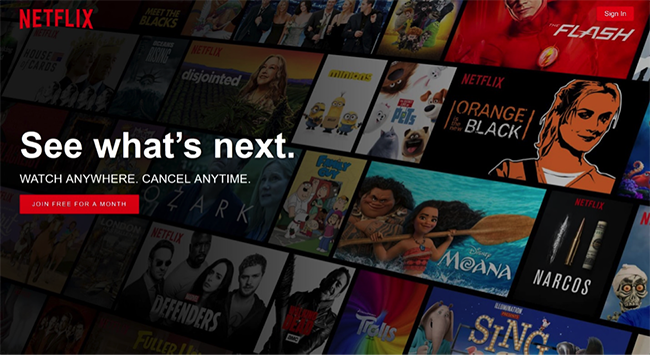
Getting that first month free gives a customer a sense of security in signing up. And to sweeten the pot, you have the option to back out at any time. Showing people that they “have nothing to lose” helps Netflix funnel more customers toward the video streaming service, growing their customer base and increasing their revenue with those who stick around and upgrade to a paid subscription.
Companies in the email marketing services industry also use a similar advertising angle. Usually, they offer customers a free trial or money-back guarantee to make them feel safer about signing up.
Like Constant Contact does it in the button:
“Try Email Marketing Free. No Risk. No Credit Card Required.”
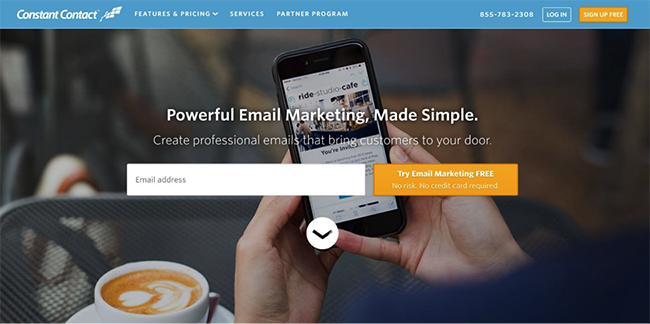
Angle #7: “No time like the present.”
Offers that have a limited time period are hard to resist and they cause people to act quickly to avoid missing out. To maximize the effects of the “no time like the present”—aka “now or never” approach, combine it with one of the marketing angles above. Like a money-saving offer.
Here’s an example from Namecheap. With just a few words, customers know they can save money by signing up for a domain ASAP. Unless they act soon, the offer will expire and they won’t be able to take advantage of the generous 98% discount code.
You can also create offers that save time or eliminate risk. Customers could save time if the offer comes with free expedited shipping or if the offer ties in with a limited-time offering.
Angle #8. The “how-to” technique
“How-To” ads are one of the most common types of advertising. They work well in both content and affiliate marketing because they help users solve their problems.
There is a significant percentage of people who search for answers on popular search engines beginning with ‘How to’. People want quick answers to their questions, and the “How-To” concept offers quick solutions as well as easy-to-follow steps.
You could use the “How-To” angle when promoting an offer to catch the attention of your audience and give them insight into how your offer will benefit them.
You should avoid using broad explanations when using this angle. Some people dislike them and prefer decisive, straightforward explanations. The key to using this angle effectively is to speak to your audience in a language they can understand.
Research your audience and find out what they want. Then use an angle that offers them a solution to their concerns. Here are a few examples:
- How to get more traffic to your blog with Pinterest
- How to earn money blogging
- How to install a solar power system in your home
The goal—with this “How-To” angle—is to appear as an authority on the topic of interest to the audience. And to do that, you should have the ability to simplify complex topics and present your ideas in a cohesive way using examples.
Angle #9. The positive minus negative method / How to [get outcome] without [struggle]
The “Positive Minus Negative” technique is a lot like the “How-To” technique—both of them walk the audience through solving a problem. However, the “Positive Minus Negative” goes a step further than the “How-To” technique in that the former helps the audience solve the problem while removing any pain points they encounter.
The “Positive Minus Negative” technique is a lot like the “How-To” technique—both of them walk the audience through solving a problem. However, the “Positive Minus Negative” goes a step further than the “How-To” technique in that the former helps the audience solve the problem while removing any pain points they encounter.
You will usually require a bit more effort than the “How-To” technique because you will have to gain enough knowledge of what your targets want to gain and what they want to lose. Benefits are what customers seek, and pain points are what they seek to avoid.
Come up with ideas of what your audience would find beneficial and what hurdles they would prefer to avoid jumping over to get to the benefits. And let those benefits sound believable. Here are some examples to guide you:
- How to make money without paying anything
- How to reduce stomach pain without taking pills
- How to lose weight without stepping foot in the gym
Angle #10: The “secret” advertising angle
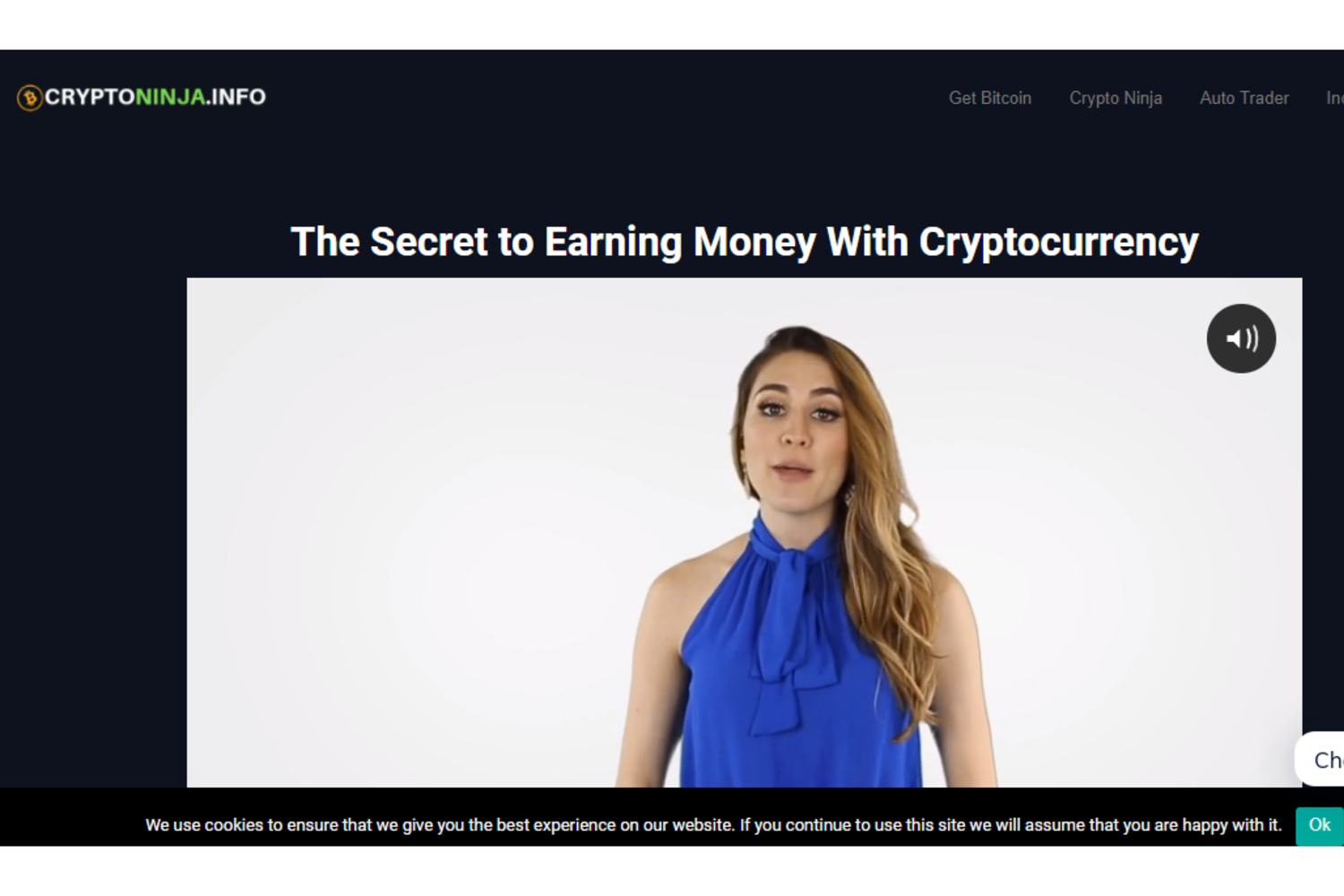
Everybody has that desire to learn something, or at least not be left out in the dark. People want to know what’s new around them and what they’re missing out on. This advertising angle helps you take advantage of that curiosity.
If you want to use this angle, you have to make your adverts look intriguing and interesting enough to get their attention. The goal of this is to make your targets contemplate what they would miss out on if they don’t view your ad. It will feel like an itch needing to be scratched.
This is an easy angle that has been used for many years. The only challenge you may face is figuring out what will make your targets tick. Here is what this angle looks like:
- The secret to your success in network marketing
- Seven secrets of consistent forex profits
- This simple tip helped this company gain hundreds of contacts from Fortune 500 companies
You don’t actually need to mention the word secret. The key here is to leave something unsaid in your headline, with the rest of the information available on your landing page.
Angle #11: Solution steps angle
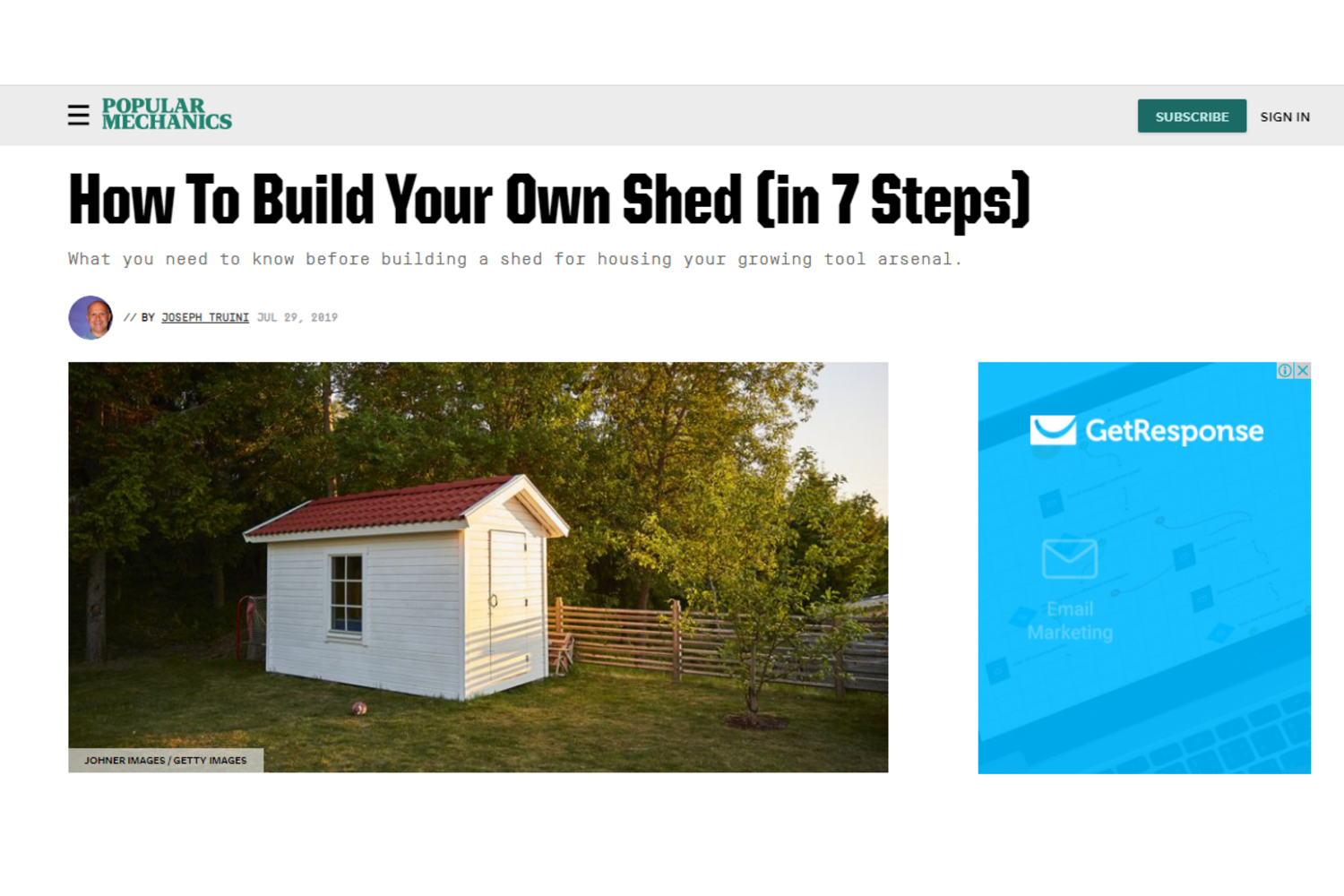
Every day, people search for ways and means of solving the problems they face. A good amount of people look to the internet for a solution, and this is where the Solution Steps advertising angle comes in handy.
Using this angle means providing simple and clear steps that solve any problem your potential customers have or that help them find what they are looking for. The challenging aspect of this advertising technique is predicting what problems your targets may need solutions to or what they want to achieve.
The Solution Steps Angle often depends on the niche you are specializing in. An entrepreneur can reach out to other aspiring entrepreneurs using this angle concept.
Depending on your field, here is what your ad angle could look like:
- Ten steps to becoming a successful entrepreneur
- Five steps for creating a killer lead generation process
- Learn how to play the piano with these eight incredibly easy steps
With this technique, you would notice that attaching a number is important. Simply saying ‘easy steps’ without mentioning exactly how many steps there are can make your audience suspicious.
Angle #12: Poignant questions technique
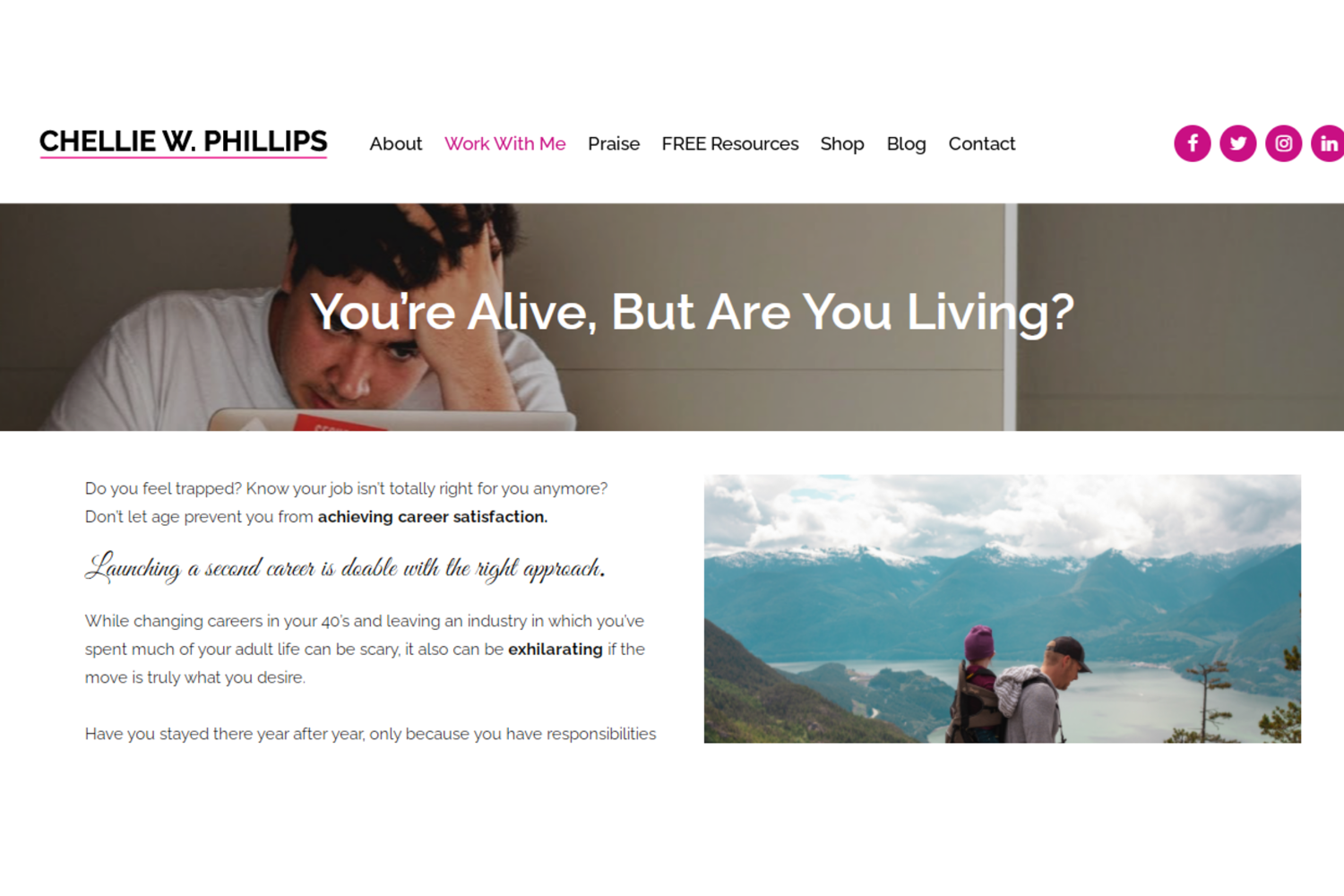
With this technique, the goal is to appeal to the targets using their own interests. Although you would influence it, your targets would still be able to come to their own conclusion. It’s a client-focused angle that works for any industry.
A poignant question is one that evokes deep feelings of regret, sadness, or longing. You will be pressing a pain point here. Use your audience’s emotions as leverage.
For this angle, just like most others, it is very crucial that you understand your target market to be able to grab their attention. The Poignant Questions technique allows you to be controversial, but always remember to keep the focus on your targets.
Here’s an example of what the angle should look like:
- With this much competition, can you still become successful?
- Do you wish to lose weight quickly without any gym memberships or pills?
- Do you want to make money without working your ass off every day?
If you would notice in the examples, we didn’t just say “do you want to get rich” or “do you want to lose weight.” We backed it up with something the target audience can easily relate to, making it highly effective.
Angle #13: Acknowledging sceptics angle
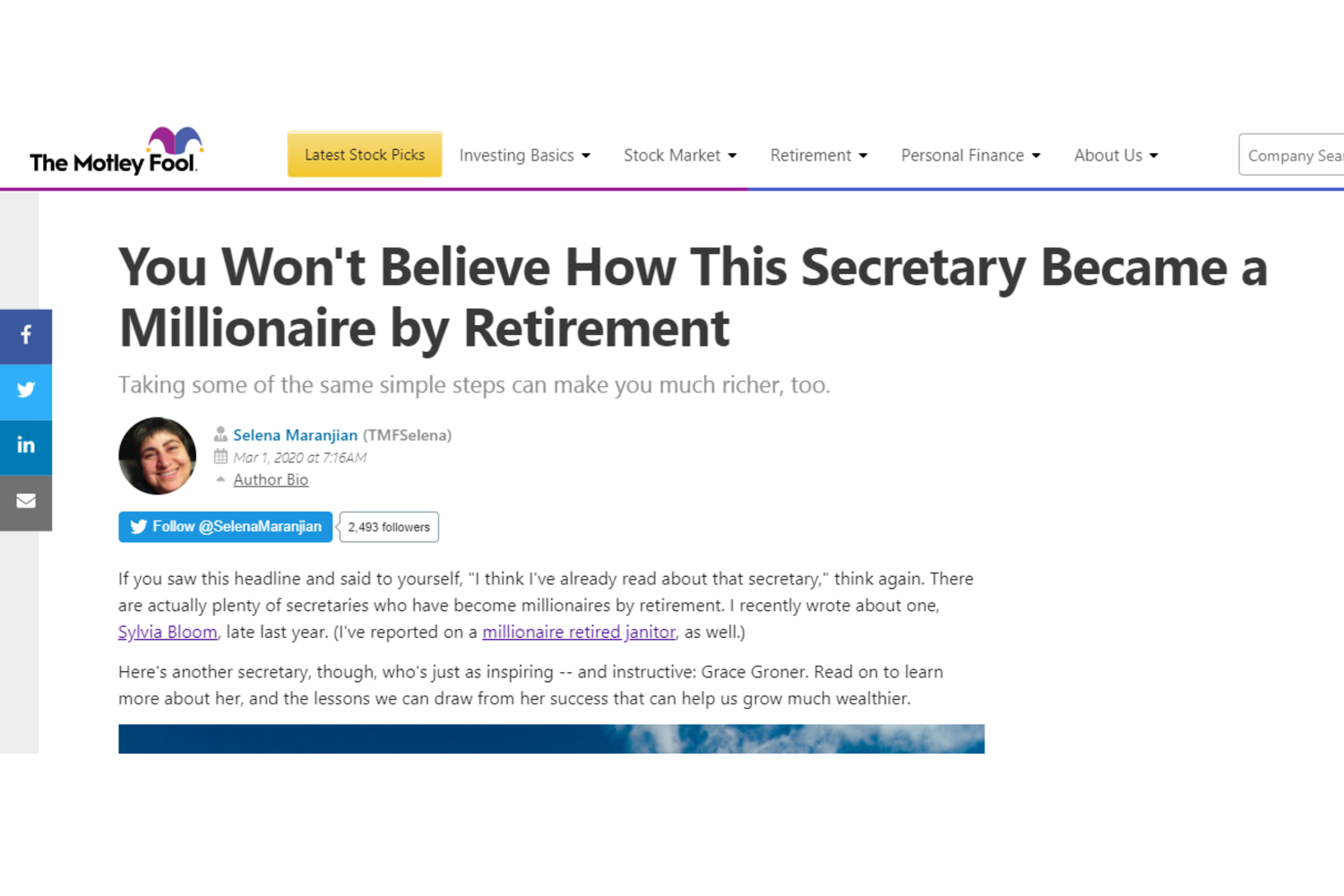
Since we all know people are often sceptical, you could leverage this by acknowledging that fact at the beginning of your angle.
Your audience will trust you more when you acknowledge how they feel and would eventually become less doubtful. This advertising angle method works best when you already have a warm audience.
The goal is to get ahead of their scepticism and criticism, and then tell a story around it. Here’s how you can use it:
- Larry Said He Didn’t Believe I Could Really Get Him Leads Until…
- They Said I Didn’t Know What I Was Doing, Well They Were Wrong
- Jane Said No Optician Could Fix Her Eyes Until…
Angle #14: Use of stories
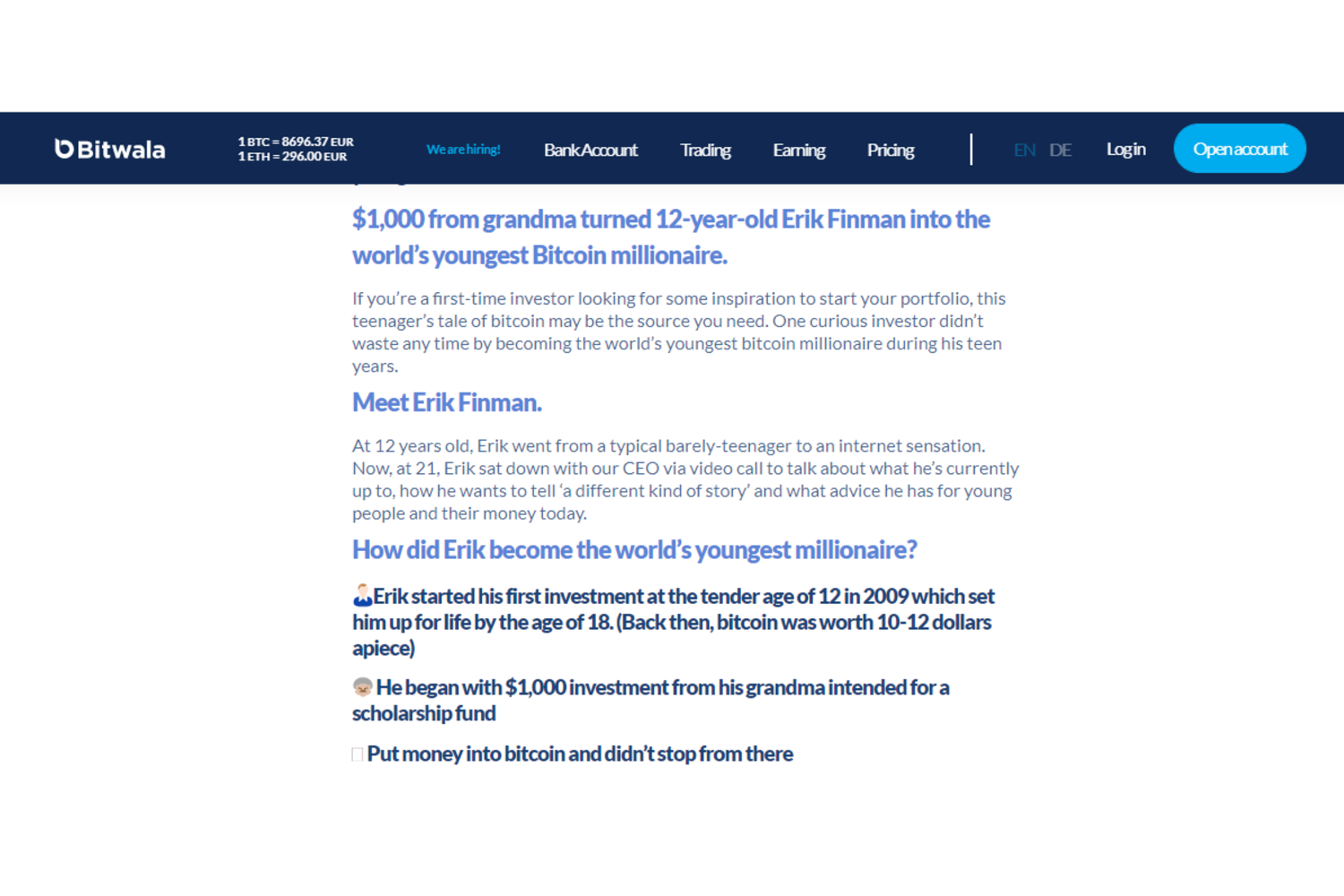
This angle technique leverages the love people have for stories. If you have a good knowledge of your ideal customer, you will be able to tell what they’re possibly going through precisely.
This is where you can easily use the Life Force 8 principle. The use of stories is very evident in Advertorials.
You can build a story around their likely problems, capturing them so well that your readers would feel like they are the characters in the story. After all, what makes an ad persuasive enough is how well it resonates with your customers.
For this angle to work, it’s extremely necessary that you know about your clients well. This is very effective as long-form content. With a long piece, your audience will be able to acknowledge that you understand how they feel and what they’re going through.
Examples of how to use this angle are as follows:
- My Family Didn’t Believe I Could Make It Until I Was Able To Buy A Home With The Help Of This Tool
- The Bank Was About to Close In On My Home, The Look In My Child’s Eyes Broke My Heart, But Then I Stumbled Upon this Mortgage Solution
- 35-Year-Old College DropOut Was Almost Homeless Until He Found This Epic Side Hustle
The key here is to use some information about your demographics. As you would notice in the examples, we know that the target market is (1) someone who couldn’t afford to buy a home before, (2) someone who needed a mortgage, (3) someone who is middle-aged and hasn’t finished school.
By incorporating some details about your target market, you can easily connect with them because they would feel like you are talking to them (like an act of divine providence).
Angle #15: “What you’re doing is wrong” angle
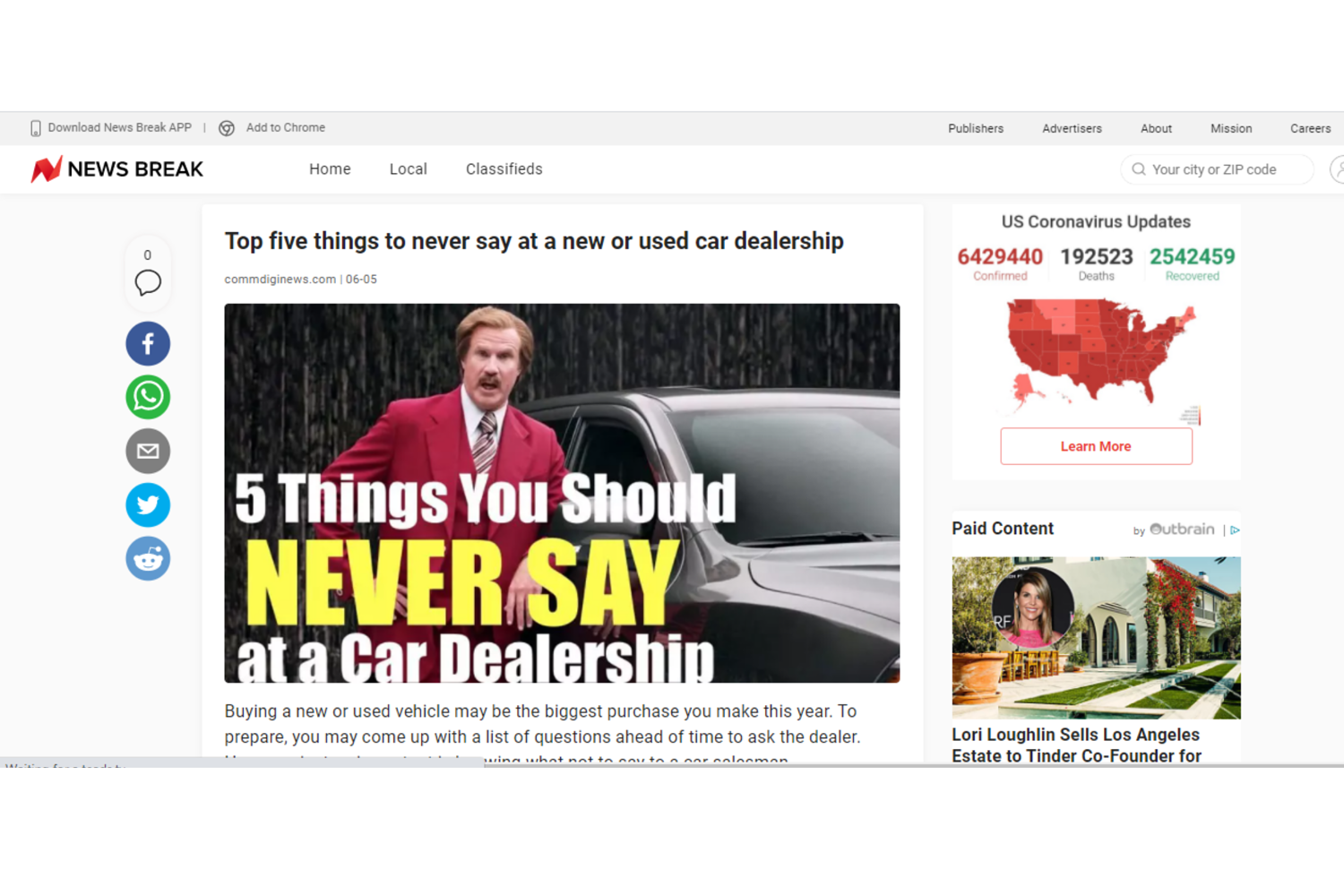
This type of angle is used primarily to destroy any beliefs your prospects may have had in the past. It can be very powerful when used accurately because people don’t like being proven wrong.
Examples of how to use this angle are as follows:
- Five Things You Should Never Say To A Man
- Why Cold Prospecting Will Not Get You the Right Customers
- The One Thing You Should Never Mention During A Sales Call
If you look at it closely, this is actually just the “How-To” Technique used in the opposite direction. Here, you are teaching them what not to do.
Angle #16: Use of controversy
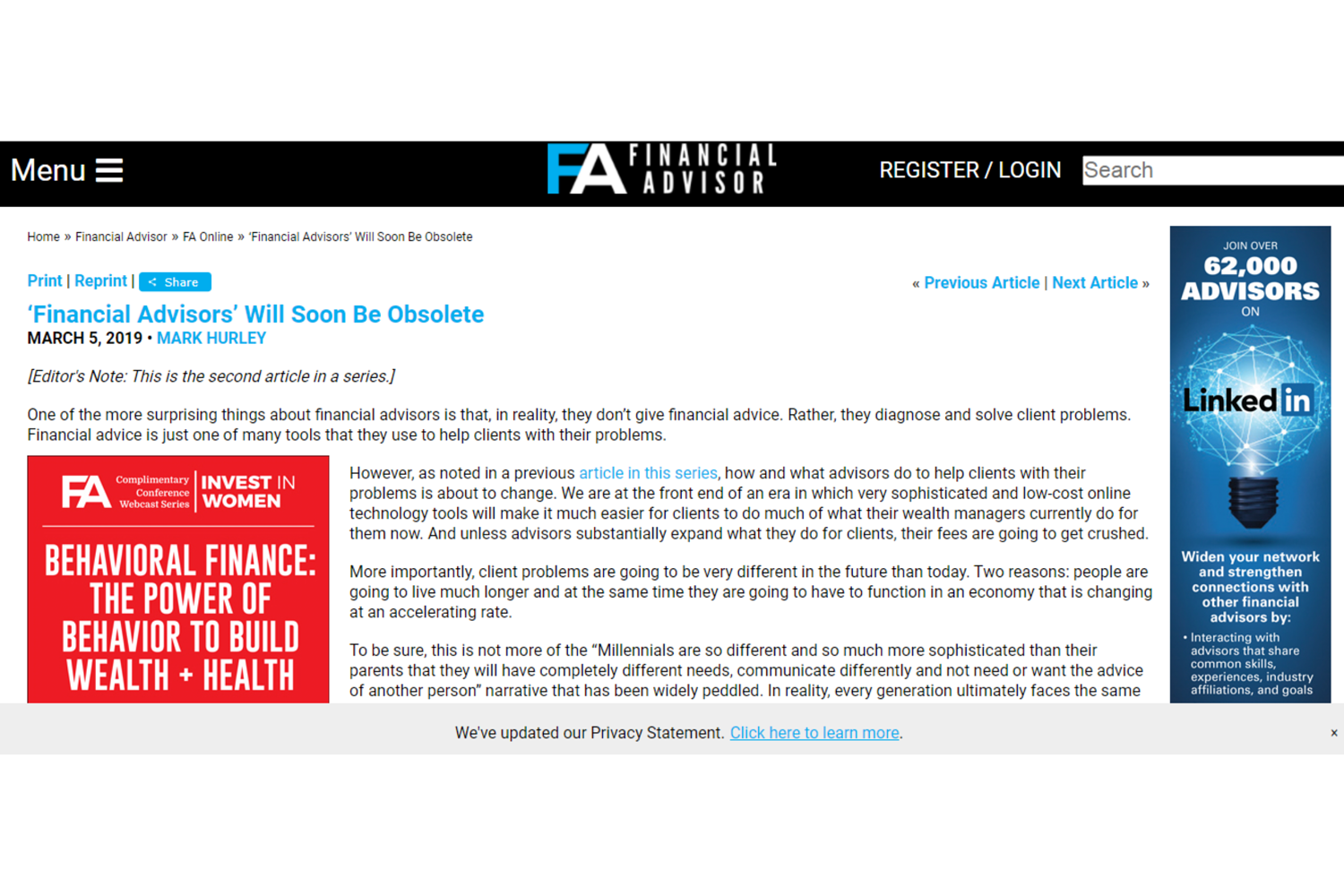
Using controversy in your angle drives users to wonder what you mean and stirs up some drama. As a general rule, audiences have an emotional reaction to your controversial statement, leading them to want to find out more.
This style is meant to shock at the onset and is typically backed up with the ‘Story’ Technique or the ‘Solution Steps’ Technique.
Here’s what this advertising angle method looks like:
- Financial Advisors Are Becoming Obsolete
- Why I Stopped Buying From Amazon
You can make something more controversial by dropping the names of brands that your customer is already familiar with.
Angle #17: Debunking a hoax/myth angle

This advertising technique is an excellent way to get your customers to accept your brand. This concept is a bit similar to the controversial technique because it also stirs drama in some sort of way. It is like a combination of the Controversy technique and other angles such as ‘What You’re Doing is Wrong’ and Stories.
Good examples of how to implement this angle are as follows:
- Stop Waiting For Referrals! Watch This Clip To See Us Debunk This Technique
- The Great Dropshipping Hoax
You need to be careful to not sound clickbait-y when using this technique. Many advertising platforms frown upon that style of content. This can still be done if you are careful with your wording, if you can back your content up with facts, and if you can follow through with your statements.
Angle #18: The breakthrough angle
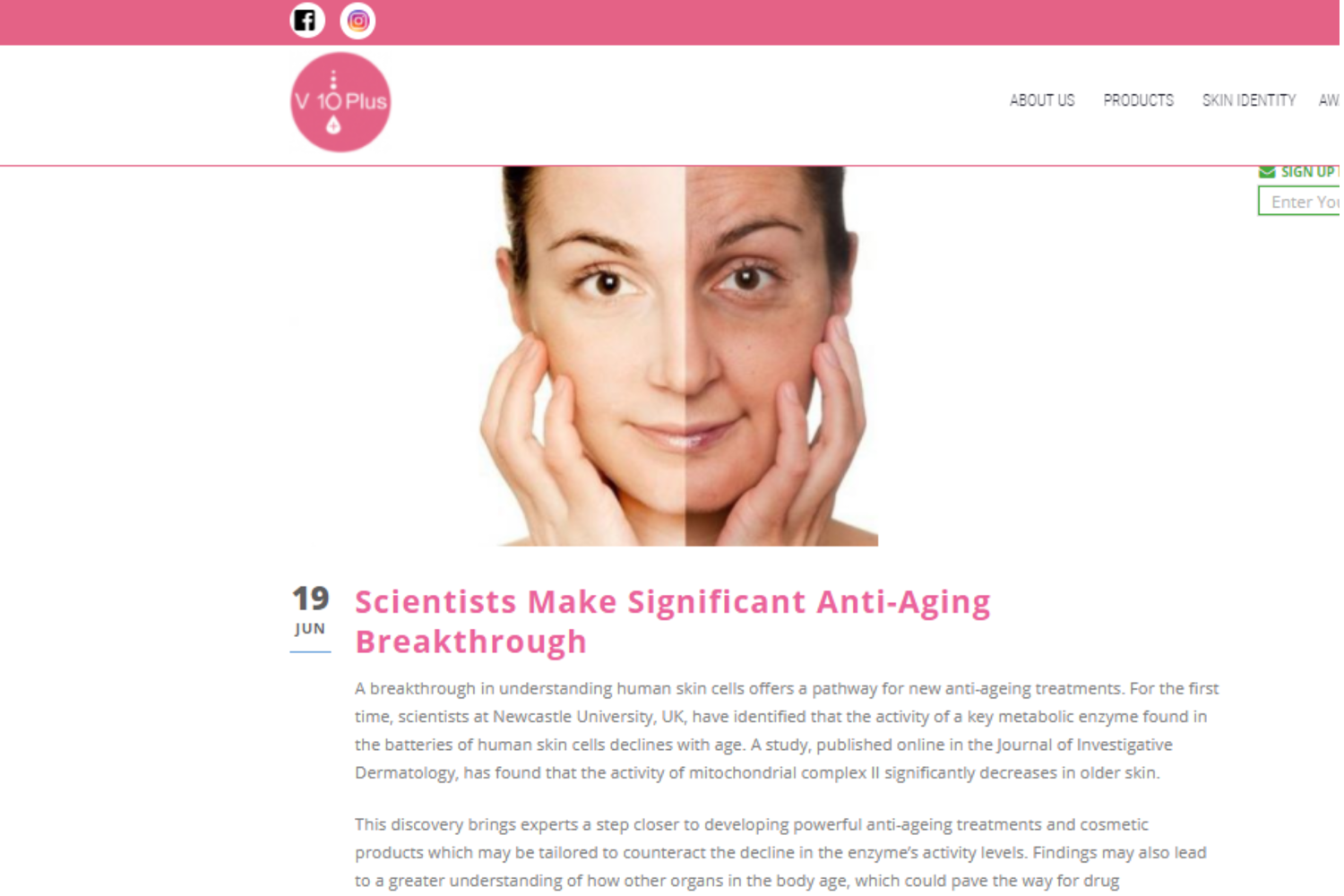
This technique can help you re-engage an audience you have already established familiarity with in the past. It can also be used on cold traffic as long as your headline is tailored correctly to your targets.
Examples include:
- This Is Amazing, I’ve Just Discovered A Powerful Way To Triple Sales
- Top Business Owners Make Use Of This Breakthrough Methods To Attract New Clients
- This Latest Discovery Can Make You Look Younger Without Surgery
The key to this angle is providing something shocking, yet never before seen (at least not in the way you presented it). It is also usually positioned as if something too hard to do or get before can now be done easily.
Angle #19: Avoid effort
People are more likely to buy something if you show them how your product will lower their effort to achieve their goal. People are always looking for an easier way to do things. Showing them how your product reduces their effort is a good advertising angle.
So, for example, if you’re selling a brand-new vacuum, you may want to emphasize the minimal effort it requires to use your vacuum to clean the house.
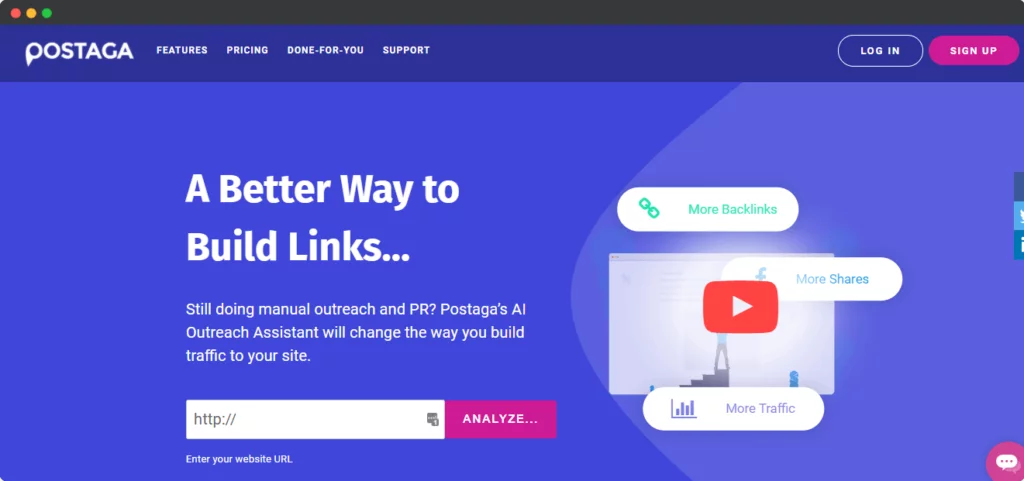
Postaga, an AI-assisted outreach tool, uses this angle well. Since the tool helps reduce manual work, they can leverage the reduced effort angle effectively.
Angle #20: Escape mental or physical pain
People will pay money to avoid feeling pain or escape the frustration they’re experiencing. If you can persuade people that your product will ease that pain, then you’ll have a winner on your hands.
Pain-based marketing campaigns identify the pain your customers are experiencing, empathize with them, and offer them a solution. The goal is to make people aware of their frustration, so they’ll buy the product to ease it. If your product helps people relax, you should play up the idea that it will help them escape their stressful lives and find peace and happiness.
Basecamp illustrates how frustrating it is to manage various applications and how Basecamp solves that by putting everything in one place.
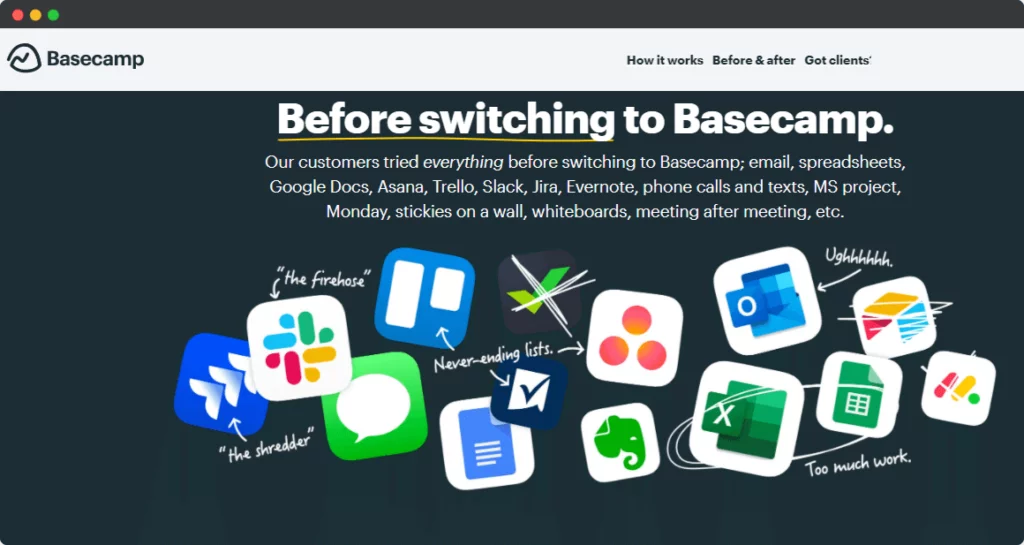
Whether you’re selling a physical product or a service, you can connect with people by positioning your brand as a way to relieve them of some mental or physical pain.
In our vacuum example, you can brand your product as a way to avoid the stress caused by a messy living room. You can also position your brand from an angle that focuses on the ability to reduce/avoid possible injury from normal mopping.
Angle #21: Increase comfort
People like to be comfortable, so that’s a huge selling point. If your audience can visualize a more comfortable life with your product or service, you can draw them. You can tell a story that puts your consumer in a position of comfort.
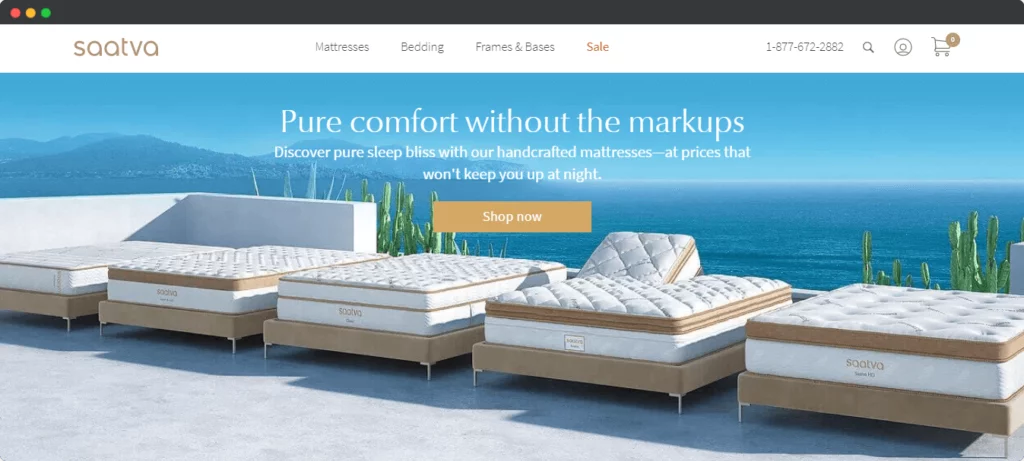
To illustrate this point, if you were selling bed sheets, you might tell a story about a person who sleeps well every night because they have great sheets. Here is Saatva using a combination of comfort and price.
Angle #22: Improve health
People are becoming more and more interested in self-care and seek out products that can help them improve their health and contribute to a long, healthy life. It works outside of the weight loss niche; many FMCG companies have been using this positioning. The rise of health-conscious consumers has been a massive boon for food and beverage companies. A lot of these companies have positioned their products as healthy alternatives successfully.
Here’s an example from Rawpressery, a company that makes fruit juice without additives or preservatives:
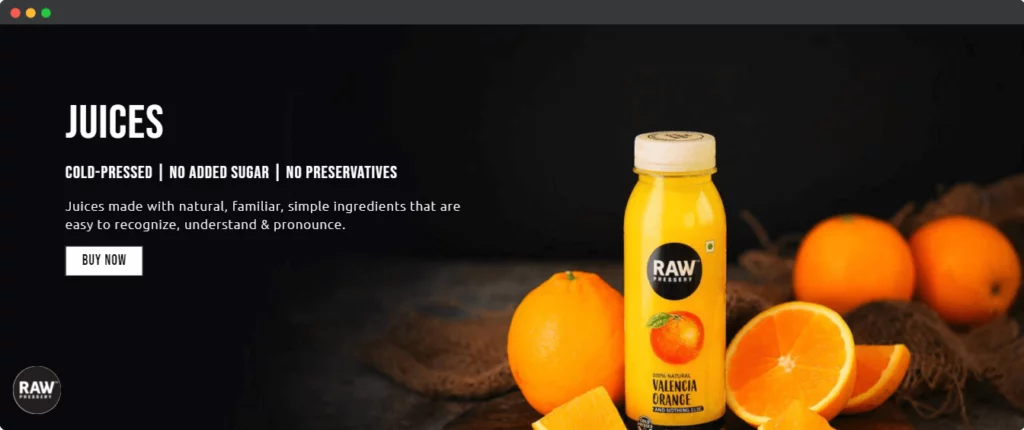
Angle #23: Improved status and luxury
For those selling high-end products and services, it’s wise to have an improved status angle. You can think of it as “status marketing.” Having something in your hands tells the world who you are and what you value.
The key is thinking about how you can make people feel more important by providing them with the kind of product or service that will make them feel special and different from everyone else.
Mercedes-Maybach screams luxury and status.
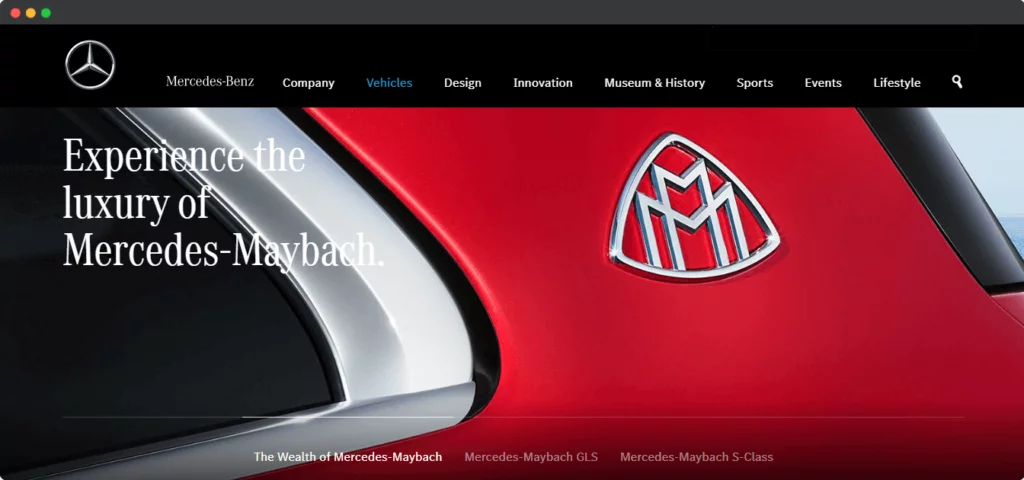
Angle #24: Feel loved
This angle is commonly used in the dating niche and wedding industry, although it’s not limited to those. Tinder, a dating website, has a big, bold promise on the homepage that instils the hope that you can start something epic and romantic.
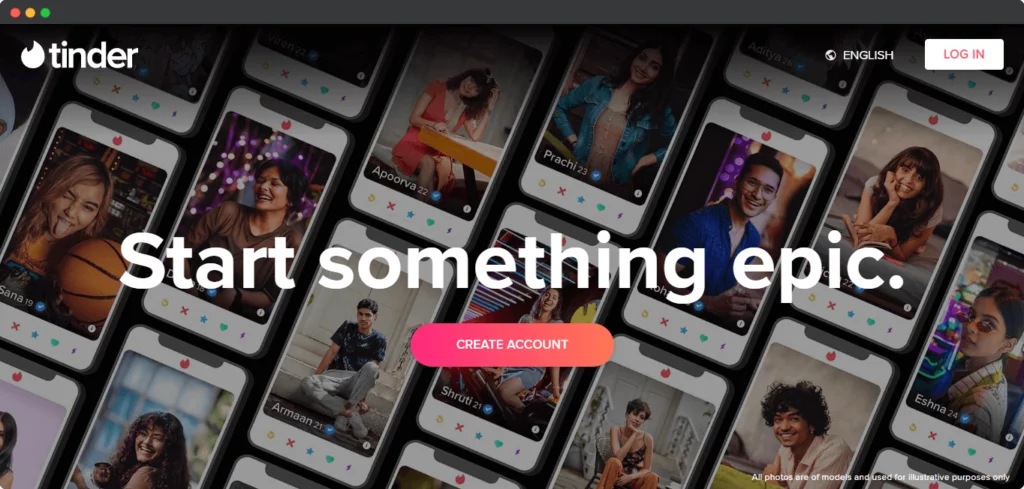
Angle #25: Be praised/appreciated
DigitalMarketer is a company that trains marketing agencies and freelance marketers. Through their marketing angle, “Always be the smartest marketer in the room,” they are pointing out how your colleagues will praise and appreciate you.

Some more angle considerations:
Angle #26: Emotions / Life Force 8 as Marketing Angle
Life Force 8, as described by Drew Eric Whitman in his book titled Cashvertising, describes the eight fundamental human instincts that are intrinsic in every person. He came up with this theory after years of consumer research.
These human instincts can be applied in marketing to communicate with your audience and convince them that your offer is worth using.
It is quite difficult to hit all eight points at once in one advertising angle, but you can incorporate one or two of these human desires to make a big difference in your campaign.
To apply at least one of these points in your affiliate marketing campaign, you must know what you want to promote. Once you’re sure of the offer you’ll be promoting, refer to the Life Force 8 to determine the angle direction that goes well with that particular product or service.
Here’s how you can use the different points to develop captivating angles:
- Survival, enjoyment of life, life extension
“Get a chance to meet the perfect man who will get you out of the daily grind, let you retire early, and enjoy the freedom and peace you’ve earned for yourself.”
- Freedom from fear, pain, and danger
“Stop living from paycheck to paycheck or wondering how you will afford your 13-year-old daughter’s university bills. Rest easy with a man who can take good care of you!”
- Comfortable living condition
“A chance to commit to the life you’ve always dreamed of and deserved. Can you imagine the walk-in closet space in that big mansion? Find a man who has enough room for your shoes.”
- Enjoyment of food and beverages
“This is your ticket to be adequately wined and dined. Say goodbye to scoffing takeaway with a sloppy boozer who answers you only in grunts. Enjoy the finest sparkling champagne in the city with a mouthwatering date!”
- Care and protection of loved ones
“Here’s a chance to give your kid the best possible upbringing and the best chances in life. Meet a man who’s already made it. You only deserve the best!”
- Sexual companionship
“Put the spark back in your bedroom! These men are confident and passionate winners, and the only thing bigger than their pockets is, well…”
- Social approval
“Finally, put an end to the smug gloating of your married friends. Catch a Prince Charming, fall in love, and watch your life turn green! You can’t find these men anywhere else.”
- To be superior, winning, keeping up with the Joneses
“Make a statement that you settle for the best and nothing less! Imagine the look on the face of your colleagues when you introduce them to YOUR perfect Mr Right.”
Angle #27: Niche as an advertising angle
- Example #1
Your offer: a weight loss product
Your niche: health niche, particularly about infections and diseases
A potential advertising angle: Losing weight helps boost strength and immunity
- Example #2
Your offer: a bitcoin offer
Your niche: wedding celebrations
Your advertising angle: Groom earns $25,000 for his wedding party in just 10 days
Angle #28: Demographics as an advertising angle
Gender
Gender plays a vital role in your marketing venture, because if your advert doesn’t appeal to the emotions of either the male or the female customer, then you most likely won’t achieve anything. In some areas, targeting by gender is as different as night and day.
Every marketer needs a good understanding of what men and women like to choose the right angles for their offer.
- Example #1: For weight loss products.
If you’re dealing in the weight loss niche, then you should understand some things about how human beings store fat. Men and women store up excess fat differently and in varying parts of their bodies. While men mostly store fat in the upper body or abdomen, women typically store a higher amount of fat in their lower part of the body.
This difference in bodily functions translates into different insecurities and motives in both genders. When your advertising angle reflects facts like this, your odds of instantly appealing to your audience is greatly improved.
- Example #2: For the automotive industry
Another example can be seen in how women and men buy cars. A study has shown that men and women clearly have different preferences when choosing a car.
While men tend to pay more attention to the product’s usefulness, technical specifications, how it works, and status symbols, most women are simply interested in how affordable it is and what the product will do.
If you are a male creating an advertising angle for a female audience and vice versa, you should try seeking the opinion of the opposite gender to get more insight.
Age
The motivation behind purchasing certain products may differ according to age. There are simply differing priorities at different times in a person’s life.
- Example #1: For the weight loss niche.
The inspiration behind weight loss for someone in their 20s would most likely differ from that of a person in their 60s. A twenty-four-year-old is more likely to be concerned about a healthier-looking experience in order to appear more desirable and attractive to the opposite sex.
A sixty-four-year-old, on the other hand, is more likely to be concerned about improving and maintaining their health when undergoing a weight loss plan, over appearing more desirable. If your target audience in this niche is middle-aged females, then your advertising angle must tap into their desire to look more attractive.
- Example #2: Baby diapers.
When advertising a product such as a baby diaper, think about the different age groups. When creating an advert for younger parents who are about to have a baby or have recently had one, you should make use of angles that let them know how helpful it can be for their babies in terms of softness, no rashes, and is eco-friendly. Younger couples tend to be more environmentally conscious.
The scenario would most likely be different in the case of older couples who are having their second or third child. They are more concerned about the price, hypoallergenic features, and ease of use.
Angle #29: Personal experiences as advertising angle / Putting yourself in the potential customer’s shoes
Since you buy products and subscribe to services all the time, you should use your own behaviours and desires to decipher what your audiences would want to see and hear.
If you’re dealing with a tech gadget campaign, then think about the qualities of the product you personally find attractive. And if you’re working in the travel niche, think about what you wish went smoother the last time you booked a trip.
It may be difficult to put yourself in the shoes of your target consumers when you have no experience using a product in the niche. You can get more insight into what consumers want by asking people who have had some user experience.
- Example: Insurance offer
If you’re promoting an insurance offer but know nothing about it, you can ask someone – a friend or family member, who knows insurance. Ask simple but targeted questions like how the insurance agent convinced him, what benefits they like the most, what doubts they had initially, and so on, just so you can get a clearer image of what points to focus on.
In addition to inquiring about personal experiences, use the power of your imagination to get a sense of what your audience may like to see. You can read about what people tend to like or dislike from different platforms.
When you think like a customer, you automatically begin to see the product in a different light and focus more on how the customer will benefit from the product than its impressive technical features.
Angle #30: Current events as an advertising angle
To ensure your offer appears relevant to your audience, you must centre your advertising around current holidays, seasons, and trends. Marketers who take advantage of this most of the time realize more conversions during the event.
For instance, during the period of Black Friday and Cyber Monday, there is often a huge spike in consumer spending. According to a study carried out by the National Retail Federation, over one hundred and sixty-four million consumers were ready to shop over the five-day Thanksgiving weekend in 2018.
This proves the possibility of making huge sales during the period. In order to take advantage of such an event, your advertising angle should be directed towards special deals for the period.
Another example of how you can take advantage of the season and be ahead of your competitors is by creating themes about the holiday. If two affiliates run the same gaming offers in the US during the Christmas season, the affiliate that uses a Christmas-themed landing page preceded by a holiday-directed advertising angle will acquire more conversions because it automatically becomes more relevant.
Even those to who your offer may be new will still feel a sense of familiarity because, in their mind, they see Christmas. The offer resonates with them better and builds more trust with your brand.
In psychology, this is known as the familiarity principle, which states that people favour things, and are more likely to pay for something that they are already familiar with.
Below are the ways to take advantage of different events when creating your marketing angles:
Seasons
For example, if you’re promoting products that enhance muscle building in men, you can use the angle of shaping up for summer and bulking for winter. Some offers are more flexible than others in terms of season, and this assists in amplifying the needs of the viewers.
Holidays
Holidays like Christmas, Thanksgiving, Independence Day, Labor Day, and many others, can be leveraged when coming up with engaging advertising angles for your campaign. Many marketers report that they receive a significant increase in sales during holidays, after incorporating the holiday spirit in their adverts.
Most people are in the self-improvement mode during the New Year and in the money-spending mode during Christmas. There are a lot of ways to take advantage of the spirit of the holidays in your angles and campaigns.
A popular way is by creating holiday sales for your product or service. If you’re running an offer in the dating niche, you could use an angle that reads ‘Don’t be lonely for Christmas’, accompanied by an interesting image of a person wearing a Christmas hat.
After the holidays when people have mostly put on weight is a great time for weight loss offerings that want to leverage getting healthier as part of New Year’s resolutions.
Apart from the popular holidays that we know, there are many other massive holidays in different parts of the world that a lot of people are unaware of. You could take advantage of such holidays as a first mover and create an angle that stands apart from the competition.
News Events
Pieces of content about current events quickly go viral because they are newsworthy. What this means is that everyone is thinking about and talking about it, thereby putting you in a better position to get the attention of your audience from the right angle.
Not only does centring your angle around current news give you more traffic and sales, but it also increases your familiarity. Nevertheless, using current news in your advertising angle as an affiliate marketer must be done with care to avoid breaking the rules of the platform you’re working with.
If you’re promoting offers in the gaming niche when a big company like Apple, Microsoft (Xbox), or Sony (Playstation) releases a hugely popular game, you can compare your offer with the popular ones to ignite curiosity in your audience. Your angle could read ‘Why X and The Popular Game are the best games to take your mind off your worries.’
When the trending news was on Samsung Galaxy Note 7 phones catching fire and exploding everywhere, a lot of fear was ignited in smartphone users. In periods like that, creativity matters a lot. Imagine an angle that directed users to detect the safety of their battery when the news of exploding phones was viral. That would have definitely drawn a lot of attention.
The COVID-19 pandemic is affecting everyone worldwide right now, forcing many people to stay at home to keep safely away from the various. If you’re thinking that marketing at a time of a pandemic is impossible, think again!
For a weight loss offer, think about how much weight people have put on because of too much lying around and sitting down. For dating offers, think about how people would love someone to talk to online to abate loneliness. For bitcoin offers, think about those who can no longer go back to their old jobs but are looking for other ways to potentially earn money.
What to take away from this post:
Marketing effectively can take time, practice, and a lot of testing, but these seven marketing angles will get you pointed in the right direction.
The key here is that every ad has an angle and, as you get more familiar with the concept, you’ll easily be able to spot the angle in any ad – offline or online.
I’ve found the angle to be the most important element in ads after the audience (if you can call the audience an element).
The fun part is that it’s also the most invisible one if you’re not familiar with the concept of it and the systematic process of testing wildly different angles before honing in on details.
In my personal experience, this is something that has taken my campaign from a disaster to wildly profitable in an instant, because it went from something my audience didn’t care about to something that was on top of their mind constantly.
What marketing angle will your business take when writing copy for your next marketing campaign?


